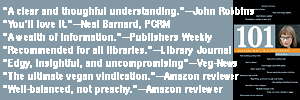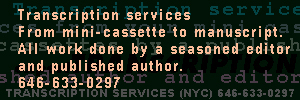



|
|
DAILY EYEPOPPERS
• HOME [EXCERPT: The main driver of deforestation, according to a new report by the Centre for International Forestry Research (CIFOR), is a recent surge in exports of beef. A sharp devaluation of the real has made exports more competitive. Meanwhile, the number of Brazilian states declared free of foot-and-mouth disease has increased; the mad-cow scourge, which put some consumers off British and American steaks, has been avoided. Hence, measured by volume, since 1997 Brazil's beef exports have jumped more than five-fold. Many of the extra cows are grazing on land that was once rainforest—often illegally occupied rather than bought. Some pasture land is later used to grow soya, another commodity with a voracious international market. The ranchers move deeper into the forest.] The Amazon: The price of success Does Brazil have to choose between economic growth and preserving the endangered Amazon? April 15. 2004From The Economist print edition DURING the 1970s and 1980s, when Brazilian governments were determined to colonise the country's last frontier, they pumped subsidies into the Amazonian interior. Today, the forces driving deforestation in Brazil are different: where once the logging and farming that eroded the forest served mainly the domestic market, it is now the demands of consumers in Europe and Asia that are driving‹and accelerating‹the destruction. Last week, Brazil's government disclosed that 23,750 sq km (9,170 sq miles) of Amazon forest were felled in the year beginning August 2002, the second-worst on record. Yet this bad environmental news is linked directly to some of the best news for the economy in years: Brazil's extraordinary performance as an exporter of commodities. Does the country have to choose between the forest and foreign exchange? The main driver of deforestation, according to a new report by the Centre for International Forestry Research (CIFOR), is a recent surge in exports of beef. A sharp devaluation of the real has made exports more competitive. Meanwhile, the number of Brazilian states declared free of foot-and-mouth disease has increased; the mad-cow scourge, which put some consumers off British and American steaks, has been avoided. Hence, measured by volume, since 1997 Brazil's beef exports have jumped more than five-fold. Many of the extra cows are grazing on land that was once rainforest‹often illegally occupied rather than bought. Some pasture land is later used to grow soya, another commodity with a voracious international market. The ranchers move deeper into the forest. Rates of deforestation used to track economic growth closely, says Paulo Moutinho of IPAM, an institute that studies the Amazon. Now, because agricultural exports have become so important, "these two curves diverge", with deforestation rising even when overall growth is weak. This creates a stark dilemma. The surge in Brazil's exports has helped stave off economic disaster and reduced the country's dependence on flighty foreign capital. But the government is also committed to reducing deforestation. João Paulo Capobianco, secretary of forests in the environment ministry, claims there is "no conflict" between the two goals. Last month, the government presented its ideas for reconciling the two imperatives in a 394m real ($137m) "action plan", praised by environmentalists for making deforestation the business of other agencies as well. The plan stresses enforcement of existing laws and "ecological-economic zoning". It calls for making deforestation of public land a crime and for tackling the vexed issue of land titles to make it easier to control its use. The idea is to "stabilise the agricultural frontier," says Mr Capobianco, and encourage farming on the area the size of Suriname that has been cleared and then abandoned. There is a debate among conservationists about how effectively the government can really "stabilise the frontier", and whether to try. "The problem is growing much more rapidly than the government's ability to deal with it," says David Kaimowitz of CIFOR. Some experts think that the ranchers and soya farmers can't be stopped, but can be taught to take better care of the land they occupy‹especially if European consumers demand clean environmental credentials. That sort of consideration might make a compromise between greenery and growth possible. Indeed, environmentalists‹many of whom once demonised ranchers and farmers‹now talk about "partnership" and even "productive deforestation". "We could oppose frontier expansion," says Daniel Nepstad of the Woods Hole Research Centre, an American think-tank, "and in opposing it remove ourselves from the discussion." The paving of a highway that links Cuiabá, in the soya-growing state of Mato Grosso, to Santarém, an Amazonian port in Pará, is a test case for co-operation. Farmers and their buyers are desperate to pave a 700km-stretch of road, to cut the cost and time of getting their products to market. State governments and the local population are equally keen. Such roads‹the arteries of deforestation‹are historically the Amazon's worst enemy. Yet many conservationists accept this one. The highway that carries soya to world markets can also bring in government services to the population and the enforcers of environmental law, says David Cleary of the Nature Conservancy, an NGO. It is an appealing vision of rapprochement between the economy and the environment. The future of the Amazon may depend on achieving it.
|